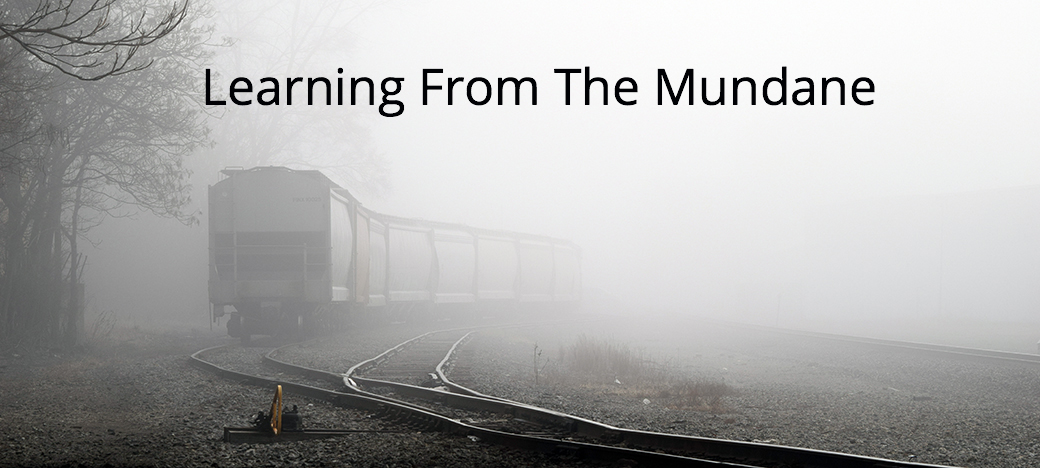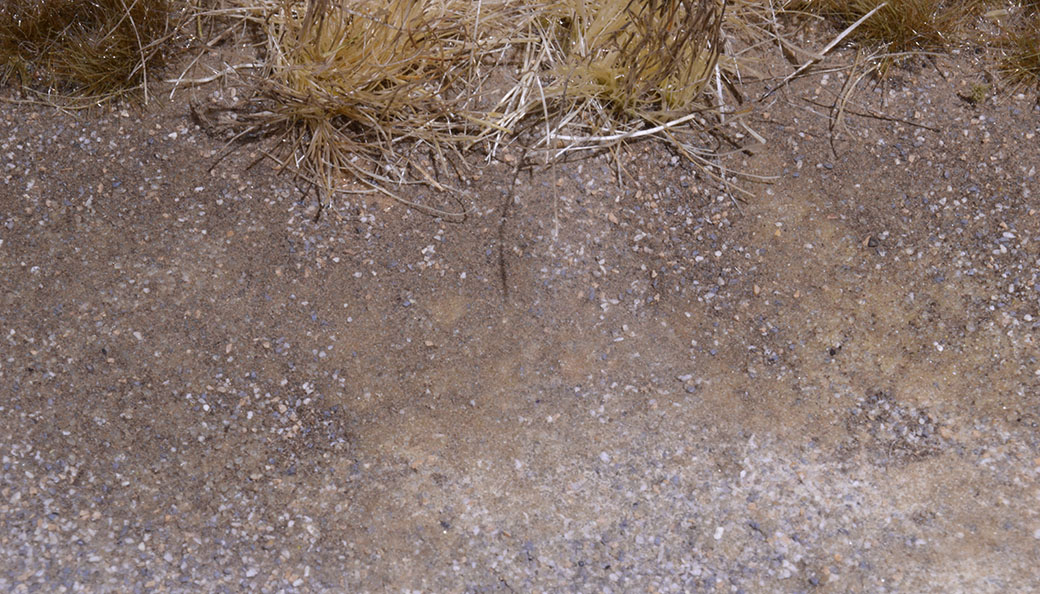
Learning From The Mundane
Like fog that shrouds the landscape, our perceptions prevent us from seeing what’s right before our eyes.
We like the spectacular and extraordinary rather than the mundane. Think rust bucket weathering styles or decrepit On30 loggers where everything is on the verge of collapse. As creators and builders we’re in there all the time with our tools and techniques, adding more and more because the tools and techniques feel good to use. Yet, when we step back as a viewer, we find a visual chaos more suited to a theme park than the reality we so earnestly want to represent.
Old habits and prejudices die hard though. I understand that it’s hard to get excited about a patch of grass or gravel drive. The very phrase: “empty lot,” sets the tone of our perception that there’s nothing of interest here.

It requires more effort to understand the subtleties of a tree line or gravelly soil. It looks like a jumbled mess, suggesting one can just throw a bunch of stuff together and get the desired effect. It doesn’t work that way. There are layers of texture and colors to see. You could just spread a bunch of commercial ballast around and call it done but does that look like the world you see?
Those who understand have been telling people for decades to take a second look at the ordinary. Yet we still want that rust encrusted boxcar, that mouldering backwoods engine house or lofty trestle spanning a mist filled gorge. Such stereotypes are never going to leave us.
We have to look deeper to understand the mundane. You have to get beyond the impression that there’s nothing here worth bothering about. In doing so we may discover there is.
By looking more intently, we learn to appreciate the object on its own terms. A patch of wild overgrown grass is different from the manicured lawns in your neighborhood and different still from the shrubs and brambles next to it. Ground up, dyed green sofa cushion isn’t going to convince anybody.
Learning to see simple objects is good training for understanding more complex ones like freight cars and structures. How satisfying would it be to clearly see the relationship between the elements of a building? To see how subtle the weathering patterns are and understand their cause rather than just slopping about with some paint chipping technique? Why is that wall bowed? How is it bowed, from end to end, top to bottom, both? Did the paint fail from exposure and abrasion or did water get into the siding and blister it off from beneath? Learning to see like this breaks old habits, habits you thoughtlessly lean on instead of deliberately looking at the realities in front of you.
It takes time and effort to train the mind (and the eye) to see what’s there instead of what we think is there. The reward is distinctive work that has something to say rather than another generic combination of products whose names we all can recite in our sleep.
Mike
It takes roughly 20 times longer to re-evaluate a cliché than it does to repeat it, so if we don’t step back and review our ideas and techniques – and it is very easy not to, given the extra effort required – then we are doomed to repeat them. What’s worse, we reinforce the cliché each time we repeat it, and kid ourselves that ground foam looks just like grass, that everything goes from pristine to beyond repair in the link of an eye…
As a craft, self-criticism (in the most positive sense of that word) is the sine qua non for progress and development. Let’s face up to it, as a craft, our hobby is surely deserving of us sometimes spending 20 times the effort re-assessing the cliché rather than perpetuating it. And let’s see no harm in that.
Simon
PS I love the heading photo for this post.
Hi Simon,
Yes it takes effort to look at things differently. We’re all creatures of habit though, content to go our merry way until forced by circumstance to change. Few embrace such changes on their own.
Thanks for the comment on the photo. When I woke up to the fog the other morning, I just had to grab the camera gear and go shoot.
Mike